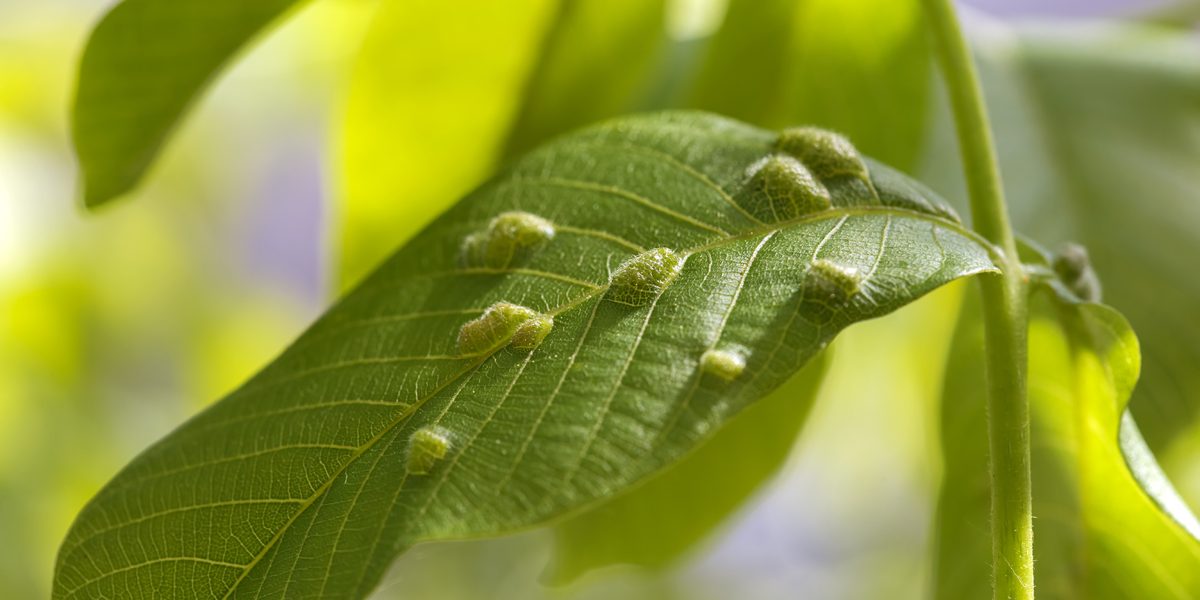Decaying trees are not only unsightly, they are also dangerous. Falling limbs could cause expensive damage your property. During stormy or windy weather, a toppled tree could crash through your home and cause injury or death. To prevent this from happening, homeowners need to inspect the trees on the property carefully for any signs of a sick or dying tree. Look for symptoms that we recommend below such as issues with the trunk, leaves, branches, roots and bark.
Leaf Symptoms
The first symptom that homeowners should notice about their sick tree is excessive falling leaves. There are conifers and deciduous that will drop leaves and needles depending on their season cycle. But, a tree that begins to lose most of the leaves suddenly in spring or summer is most likely sick. Leaves that are attached but shriveled or discolored before autumn is another sign.
Branch Symptoms
Falling branches are also a sign that your tree is sick. While storms could snap branches off, sick trees will drop leafless branches. When you look at the branch, you will see rot or insect damage.
Trunk Symptoms
The owl hole is a bad sign for a tree. Inspect the tree for any rot spaces near the base of the trunk for other sickness symptoms.
Bark Symptoms
Healthy trees will have soft, pliable bark that has even coverage on the trunk, but a sick tree will have flaking, brittle bark. Often times there could be bald spots on the bark.
Root Symptoms
If the roots are damaged by heavy vehicles, lawnmowers, or is waterlogged constantly, then your tree could be at risk. Look for signs of sogginess such as fungus or wood ears.
Check The Leaves
If your leaves are falling off the tree fast or falling in large amounts and its more than normal, then your tree could be sick. If the leaves aren’t dropping but are discolored or shriveled up, then your tree could be sick.
Examine Branches
If the branches are falling off the tree, then you could have a sick tree. Strong winds or storms could break them off, but a sick tree will drop branches more than normal. They won’t have leaves when they drop, and if you look at them branches, there may be tree rot or insect damage which explains why your tree is sick.
Look At The Trunk
You do not want holes or dents in the trunk. Even though they make great homes for forest life, they are a sign that the tree is dying.
Check The Bark
Sick trees will have brittle, scratchy bark that may fall off while a healthy tree will have a soft and flexible bark. If the tree is sick, there may also be bald spots on the bark.
Check The Roots
There are plenty of things that could hurt tree roots from toys, to water to lawnmowers. If the root gets damaged, then the whole tree is in danger. Check to see that the roots aren’t scratched or flooded.
It is important that you know and find the symptoms of sickness to prevent your tree from dying and causing damage to the property.
Trees for Sale
With 4 east valley locations our team can help you find the perfect trees and plants to take your landscape from ordinary to extraordinary. In addition to selling trees and plants we partner with companies that will plant your trees or plants and care for them as long as you wish. That means all you need to do to get your landscape looking it’s best is stop by and browse our trees, choose your favorite, and leave the rest of the work to the pros.
Call or stop by one of our 4 locations today!







